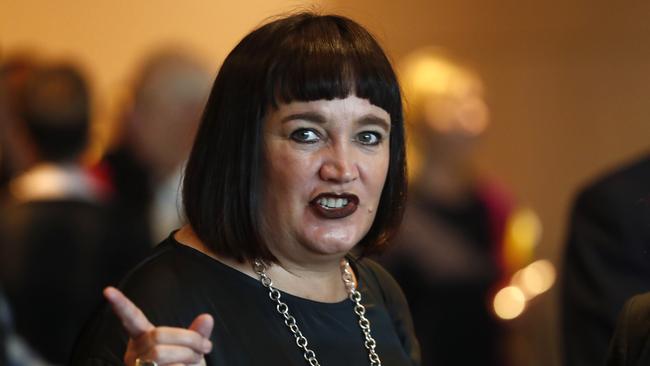New model to tackle Australian rugby’s arrested development
Rugby Australia chief executive Raelene Castle has confirmed that Australia will follow a similar centralised model like New Zealand.

It has been hinted at for quite some time but Rugby Australia chief executive Raelene Castle has confirmed that Australia will follow a similar centralised model to New Zealand’s to get the Wallabies and Super Rugby franchises back on track.
In an exclusive interview with The Australian, Castle revealed that Rugby Australia had been working for the past 10 months to achieve a full high performance alignment and integration with the Super Rugby clubs and the Wallabies.
“Some people would call it ‘centralisation’ but for us it’s the way that we’re going to ensure that the Wallabies are strong, that Super Rugby is strong and that both of those areas are needed for us to have that platform that drives positive conversation and success for rugby in Australia,” Castle said.
Inevitably, the RA plan will be seen as mimicking the system that has made the All Blacks so successful but the model has also worked in Ireland, where the professional rugby system is structured somewhat as it is in Australia, with four major provinces all feeding a national team that has risen to No 2 in the world.
There will be accusations that RA is attempting to impose a rigid orthodoxy over Australian rugby, compelling all franchises to play a homogenised brand of football. It is one thing, however, to have players using world-best practice in implementing their rugby skills; it is another thing entirely to suppose that teams would be required to follow a certain pattern of play.
“It’s important that this is not about Rugby Australia taking control to a level that doesn’t allow influence and focus on a different style, be it a Brumbies style or a Reds style or a Rebels style,” Castle said.
“This is not about Rugby Australia having a vision of all the teams playing the same, this is about coaches having their own influence. But it’s more about the technical nature of them following good and robust high performances practices and processes to ensure we have the best people and the best systems and that those people and systems are in the right place within our professional rugby landscape.”
Already the first elements of the new system are being implemented, with Rugby Australia working with the Queensland Rugby Union to ensure that a suitably qualified assistant coach is appointed to replace Paul Carozza, who stood down from his position earlier this year to return to the player development role in which he excels.
The way in which New Zealand Rugby is able to influence who coaches where and at what level is a key component in ensuring that their production line remains in full swing. And it ensures that coaches are fully qualified for the job and have not been appointed because they are good mates with the head coach, as so often happens within Australia.
It begs the question of precisely how Rugby Australia will exert influence on the Super Rugby franchises. The states would not tolerate interference from head office that they view as lightweight and the panel of expert coaches being set up under Rod Kafer would have a significant role to play in this regard.
All the details of how this system will operate are still to be nailed down but when it is starts to function, Castle envisages it influencing the professional game.
Should, for example, Rugby Australia give its blessing to James Slipper to join the Brumbies or would it be concerned that he and Scott Sio, Australia’s two best and most experienced Test looseheads, would both be playing for the one franchise?
“That’s a very specific example,” she said. “That is an example of where, when you have got high performance alignment, you do have much more open conversations with your Super clubs specifically around player movement. That is an advantage. Certainly we are engaged behind the scenes in those conversations but we’ve actually got a structure to back up that process.
“We’ve seen the success of the All Blacks off the back of a fully integrated and aligned high performance system. There have been some improvements in countries like Scotland and Ireland because of the systems they’ve got in place; the recognition from Rugby Australia and the states is that that is an important step in ensuring that we can have the most cost-efficient as well as well-resourced and aligned system across Australia.”
The question will be whether the Wallabies proceed down the route of having an independent selector or selectors, filling the same mould that Grant Fox plays with the All Blacks. Castle would only say such a conversation was “probably outside this discussion at the moment”.
There is little doubt Wallabies coach Michael Cheika is opposed to outsiders looking over his shoulder at selection time but all indications are the All Blacks have an entirely collegiate approach.
This is not confined to selecting Test teams but in identifying weaknesses and working to identify who will fill those gaps. The task for the selection panel is to develop players much as the All Blacks did with Dane Coles during the final years of Keven Mealamu and Andrew Hore sharing hooking duties. It is unthinkable that the All Blacks would have allowed a situation to develop where they had become as entirely dependent on Beauden Barrett at five-eighth as the Wallabies are with Bernard Foley. The Foley of 2015 was in commanding form at the World Cup but he has been able to keep the 10 jersey in recent years because there is no one challenging his position.
Matt Toomua was brought home from Britain to provide depth but he has not set the world on fire in his two matches off the bench against New Zealand.



To join the conversation, please log in. Don't have an account? Register
Join the conversation, you are commenting as Logout